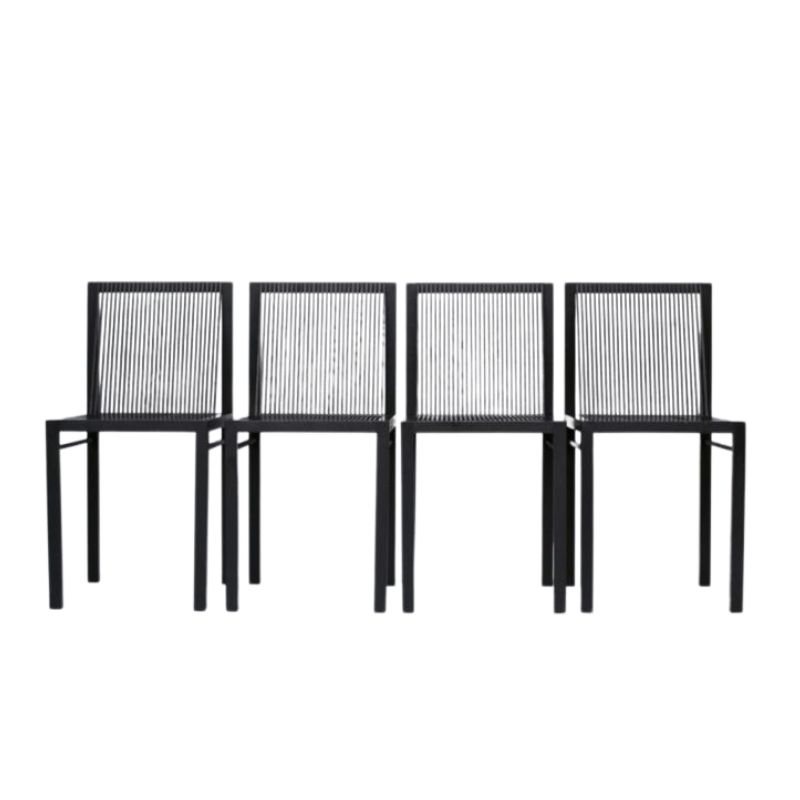I'm a little taken aback DC!...
I'm a little taken aback DC! Seems like something you would be fimilar with (in name).
They're both schools and movements from roughly the same time period. I'm struck by many of similarities. at least to my eyes, and very curious about this.
This one for a start...
http://en.wikipedia.org/wiki/De_Stijl
WoofWoof...
Sorry to disappoint you. There is so much I don't know and want to learn about this field; this is just one more hole in my knowledge that is about to be filled.
Likewise, I did not know of the Functionalist school, even though I was well aware of Louis Sullivan, until Koen brought this school into my line of sight. He not only characterized it and mentioned other practioners, but then fit it into an evolutionary timeline so to speak; then many others contributed; then my mind was stimulated to make its own connections; this is how I have come to learn much of what I know about design.
For what its worth, I am aware of quite a few of the designers associated with De Stilj, but I have never explored them as a group/school, and am eagerly looking forward to this discussion.
I come to DA precisely, because persons like you often pose topics that allow me to fill in the gaps in my knowledge that then give me a chance to make some of my own connections on the subject.
Again, I apologize if I have been unintentionally misleading you, or others, about being more knowledgeable than I am.
I just care.
DC...You don't disappoint,...
DC...You don't disappoint, just a casual assumption. I find your contributions very insightful..oft times leaving me with more questions to ponder. Modernism as a whole is an odyssey filled with twist, turns, peaks, valleys, all intertwining that I can have difficulty making connections, as in this case, and certainly don't expect anyone to be able to. Just to throw it out, Mid eastern, Asian, and African modernism I'm absolutely clueless about...another tread another time.
You...misleading...hardly!
Onward!
Where is Koen anyway...lazily enjoying retirement?
I found this link...worth the read
http://char.txa.cornell.edu/art/decart/destijl/decstijl.htm
Some geneology might jump start this discussion...
Functionalism (e.g., Sullivan's tall commercial buildings) is the solid, upright box with ornament.
Wright's Organic style deconstructed the solid box into intersecting planes with simpler ornament and oriented the box to either harmonize with the topography or express the urban grid if the topography were flat.
De Stilj took Wright's deconstruction another step by further rationalizng Wright's intersecting plane organicism with an elimination of nonplanar ornament, an elimination of earthy organicism, and an introduction of primary colors on surfaces to accentuate and syncopate the intersecting planes. Note: Mondrian, in painting was said to have had the syncopations of jazz in mind in his distributions of grids and colors. Clearly Rietveld and other De Stiljers were up to something similar; i.e., improvisation within rather rigid frameworks.
Bauhaus reconstructed the functionalist box, but eliminated ornament and used muted colors, or unadorned steel and concrete, to call attention to the space of the box. The box itself was also sometimes made to intersect, or join with other boxes.
In the De wake of the still born De Stilj and prolific Bauhaus, we see Cranbrook modernists like Eames trying to bind the division between De Stilj and Bauhaus. The Eames house is an example of trying to synthesize, or at least combine De Stilj and Bauhaus. It doesn't work, however.
In turn, De Stilj withers and dies and Bauhaus modern proliferates so widely that eventually begins to cannabalize itself and ends in reflective glass box caricatures of itself.
Venturi decides to remedy the limited vocabulary and emerging moribundity by an infusion of complexity and contradiction; specifically by reconstructing the solid box without space (emphasizing surfaces shorn of intersecting planes) and reintroducing spatial ornament, but with an ironic twist.
I'm now viewing De Stijl not...
I'm now viewing De Stijl not as a "school" per say...but just a movement with a core group and multiple touch and go players. I strikes me more as an experiment on very centralized themes. In contrast Bauhaus wasn't just a movement, but a physical school as well. Bauhaus solidified itself not just in it's approach to the arts, but by industrializing itself or aligning itself with industrialist?....much like Wiener Werkstatte.
In contrast to my previous posting...Bauhaus has the freer looser approach. Whereas De Stijl too rigid in it utopian agenda. Van Doosbergs trips outside the Netherlands could be seen as a kind of PR move, ending up being more of an influence to others... like within the Bauhaus, but the rigidness of it's form being a turn off...perhaps...
Versus?
The question is intriguing, not as much because of the possible strengths and weaknesses, but because of the "versus" between De Stijl and Bauhaus. I suspect that a closer look at the history reveals a very smooth continuity between the two and not the suggested discontinuity.
One of the weaknesses of the Bauhaus is that it was unable to generate its own form language. Yes, it proclaimed the importance of the machine and the reconciliation between function and the imperatives of the industrial production methods. In reality it never really understood neither the limitations nor the possibilities of machine made objects. So, it "borrowed" basically two existing form languages: the Russian Constructivist one and De Stijl. It is true tat they all started more or less at the same time. Russian constructivism or Suprematist school in 1917 or 1920 depending on your choice between Malevich's comments on Rodchenko (1917) or Naum Gabo's use of the word in his Realistic manifesto of 1920. The Bauhaus starts as we know in 1919 with the Gropius manifest and the Stijl with it?s first publication in 1917?.or the first abstract Mondraan also in 1917, or Robert Van 't Hoff's Villa Henny. The always doubtfull Wikipedia fails to mention the Dutch architect Robert Van 't Hoff in it's information on De Stijl, but I would suggest that his Villa Henny in Huis ter Heide is the the first significant architectural expression of de De Stijl mouvement. As a participant and writer of several articles, he was not only important to the mouvement and the magazine but his personal wealth allowed him also financed the publication for a while.
Robert Van 't Hoff by the way is also the link between Frank Lloyd Wright and De Stijl. Villa Henny is still symetrical but aside from the obvious FLW influence it has a clear neo-plasticist (term used first by Schoenmaekers) form language. Liberated from the traditional, clearly defined geometrical volumes, 90 degree angles, no restrictions of natural form (see De Stijl Manifesto 1918, signed by a.o Van 't Hoff) etc.
The links between the three are known, Van Doesburg's eventfull stay at Weimar in 1921, El Lissitzky and Richter joining De Stijl, etc. Even Gropius could not resist designing a Rietveld-like "De Stijl" fixture for his Weimar office. Van Doesburg became the reason behind Itten's resignation and the arrival of his replacement Lazlo Moholy-Nagy.
cont.
Of course De Stijl was very "Dutch", calvinistic it it's rigour, and consistent with the ideology, even at the expense of the most basic comfort, (It is not surprising that the rift at the end of the mouvement between Mondriaan and Van Doesburg came after the introduction of a diagonal in one of Mondriaan's paintings) but, the differences in ideology, the differences in cultural background or the differences in the origins of each of the three major mouvements did not produce major differences in form language. One can could argue that there are major differences between some of the head figures of the mouvements. Tatlin could hardly be taken for Mies Van der Rohe, or J.J.P.Oud for Breuer, but, especially in the case of the Bauhaus teaching staff these people came with their own strong personal style. M.v.d.Rohe did not become the architect we know in the Bauhaus, not did Klee or Kandinsky developed a "Bauhaus style" in their paintings. etc. etc. As Arthur Pulos often argued, as a school the Bauhaus was probably a failure and indeed few of us would be able to give many names of known Bauhaus students beyond Wilhelm Wagenfeld, Marianne Brandt, Max Bill and Anni Albers. The strength of the Bauhaus was the combined strength of the teachers, not of the program.
I guess what I am trying to say is that in hinsight, when the ideological rethoric has been proven wrong, when the manifestos have attracted that strange taste of "you had to be there", what is left are a rather homogenious collection of build and produced results that show little to support a pro and contra discussion.
If you need any help, please contact us at – info@designaddict.com









